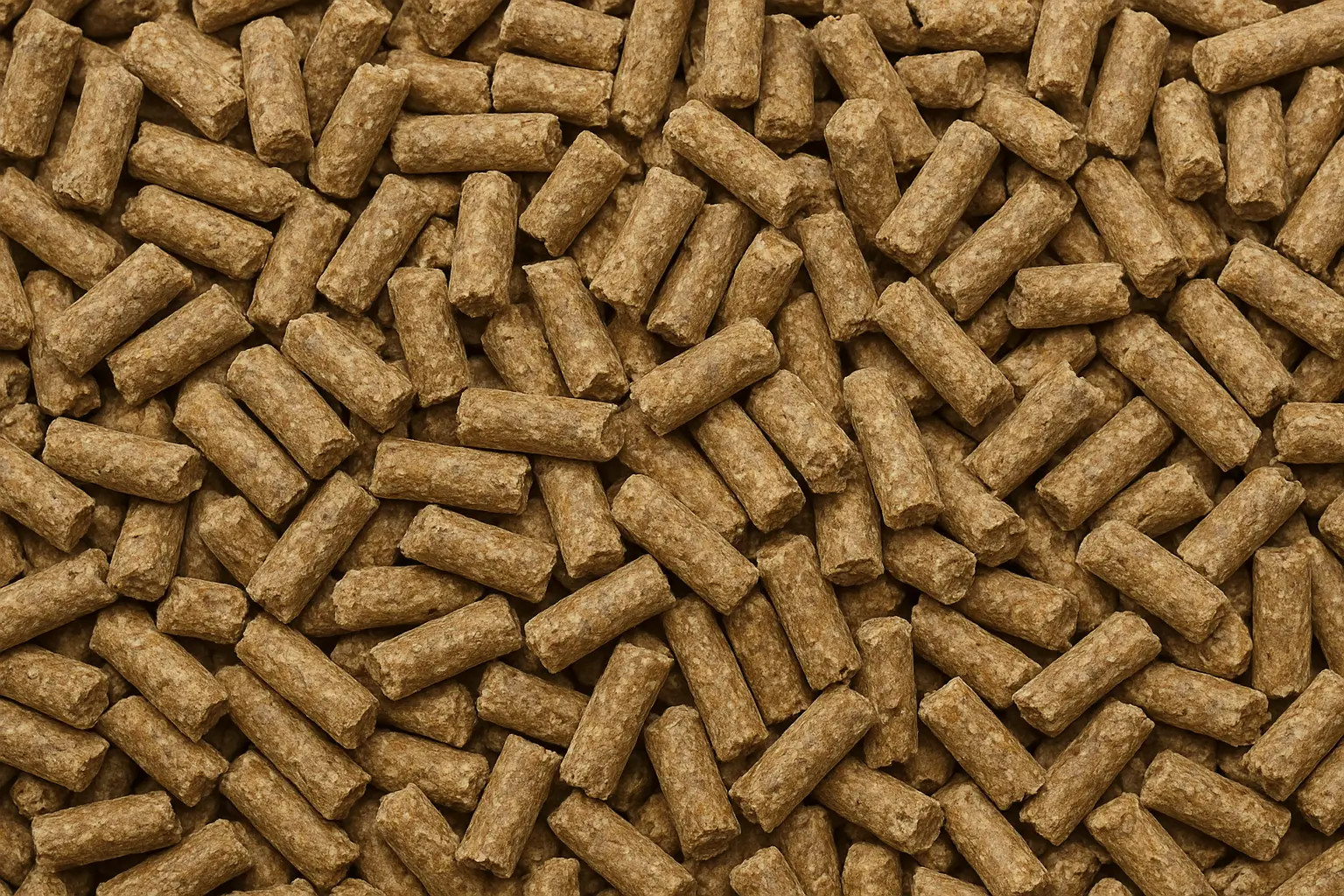Brief Introduction of Organic Pig Feed Pellet Production
Making organic pig feed pellets is more than just mixing grains and pressing them into pellets. You need to understand the feed nutrition, pig behavior, and the small details that can make a big difference in herd health and performance. Pig farmers find they can improve feed quality, reduce waste, and even lower overall costs with the right approach. They often take feed production into their own hands.
Why Pellets Work Well for Pigs
Pelleted feed has a clear advantage over mash feed meal. Pigs often pick out their favorite bits when giving them a mixed mash feed. This leads to uneven nutrition and wasted feed. Pelleted feed can ensure each mouthful at a balanced diet with locking every ingredient together.
There’s also the matter of digestibility. The heat and pressure used during pelletizing slightly alter the structure of starches, making them easier for pigs to digest. Farmers often notice a modest but consistent boost in weight gain and feed conversion rates when switching to pellets — especially in younger pigs.
Choosing Ingredients That Meet Organic Standards
Organic pig feed pellet production comes with its own set of rules. Every ingredient must be certified organic, from the cereal grains to the protein supplements and even the mineral additives. That means no genetically modified crops, no synthetic fertilizers in crop production, and no chemical preservatives in the feed mix.
For a balanced organic formula, you might combine corn or barley for energy, soybean meal or field peas for protein, and alfalfa meal for added fiber and micronutrients. A good organic mineral premix will round out the diet. Farmers who grow some of their own feed crops often find this approach both sustainable and cost-effective.

Understanding the Pelletizing Process
A feed pellet machine works by pushing the mixed feed through a metal die under pressure, cutting it into uniform pellets. For pigs, pellet size matters—too small and pigs may waste energy eating, too large and younger pigs may struggle to chew.
From experience, 4–6 mm pellets tend to work well for most stages of pig growth, while nursery pigs may do better with something closer to 3 mm.
Temperature control during pelletizing is another overlooked factor. Too hot, and you risk damaging heat-sensitive nutrients like certain vitamins. Too cold, and pellets may crumble too easily. In practice, keeping conditioning temperatures in the range of 65–75°C works well for most organic recipes, but this can vary depending on the mix.
Common Mistakes to Avoid
One of the biggest mistakes new producers make is skipping the mixing step or doing it too quickly. Uneven mixing leads to inconsistent nutrition, which can hurt growth rates. Another pitfall is over-conditioning the feed—more heat is not always better.
And finally, don’t underestimate the importance of proper cooling after pelletizing. Warm pellets can sweat inside storage bins, creating moisture that leads to mold growth — a serious problem in organic systems where chemical mold inhibitors aren’t allowed.
Final Thoughts from the Field
Producing your own organic pig feed pellets takes some learning, but it’s a rewarding process. You’ll have complete control over what goes into your pigs’ diet, you can adjust formulas based on seasonal ingredient availability, and you’ll likely see improvements in feed efficiency. More importantly, you’ll know that every mouthful they eat supports not only growth, but also the organic principles you’ve committed to.

FAQ About Pig Feed Pellet Production
Q: What is the main difference between making regular pig feed and organic pig feed?
A: The two biggest differences are the pig feed ingredients and the documentation. For organic feed, every single ingredient must be certified organic, and you cannot use GMOs or synthetic additives. You must also keep detailed records of everything to prove your compliance to a certifying agency.
Q: Can I use the same machine for both organic and non-organic feed?
A: It is possible, but it is very difficult and risky. You would need an extremely thorough and documented clean-out process between every batch to prevent cross-contamination. Any residue of non-organic material could cause your organic feed to fail certification. For this reason, most serious organic producers use dedicated, separate equipment.
Q: Is it more expensive to make your own organic pig feed?
A: Yes, certified organic ingredients (like organic soybeans and corn) are significantly more expensive than conventional ingredients. However, making your own organic feed is almost always still cheaper than buying pre-bagged, certified organic commercial feed, which has very high markups.
Q: Where do I find vitamins and minerals that are approved for organic feed?
A: You need to source a specific vitamin and mineral premix that is listed as “OMRI Listed” (by the Organic Materials Review Institute in the US) or is otherwise approved by your specific organic certifier. You cannot use a standard, conventional premix.
Q: Do I need a special “organic” pellet mill?
A: The machine itself is not special. A standard, high-quality pig feed pellet mill will work. The “organic” part comes from the certified ingredients you put into it and the strict processes you follow, such as ensuring the machine is perfectly clean and has not been used for non-organic materials without a full and documented clean-out.
